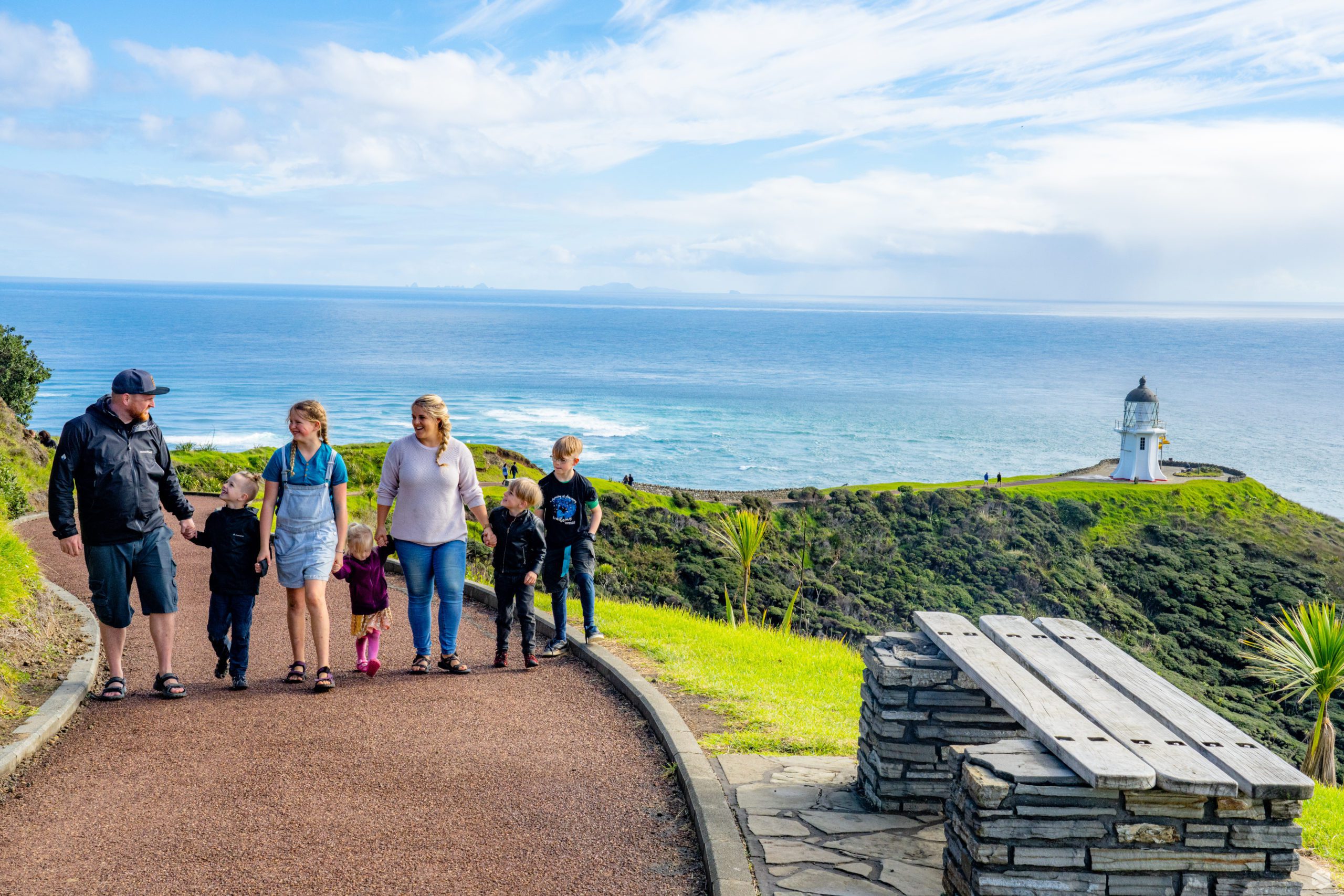

You know that feeling you get when you finally click “book” for your upcoming international trip?
You’ve researched, chosen your location, and finally made the purchase. The butterflies of excitement and anticipation begin swirling inside of you!
…then, shortly thereafter, in creeps the fears of the unknown. The questions begin circling: What can you expect? Will this new, foreign land be uncomfortable? Will you enjoy this new experience? Will you be able to find what you need?
Your first trip overseas can be nerve-wracking, and questions on whether this is the right decision are commonplace.
Let me assure you right now, YES, IT IS!
While there is a small learning curve, international travel is 100% worth the effort. Experiencing different cultures and ways of life enriches and amplifies your life and helps you appreciate life in general.
This post will explore a few tips that will help you prepare and enjoy your international travel.
My number one tip for anyone traveling abroad: RELAX.
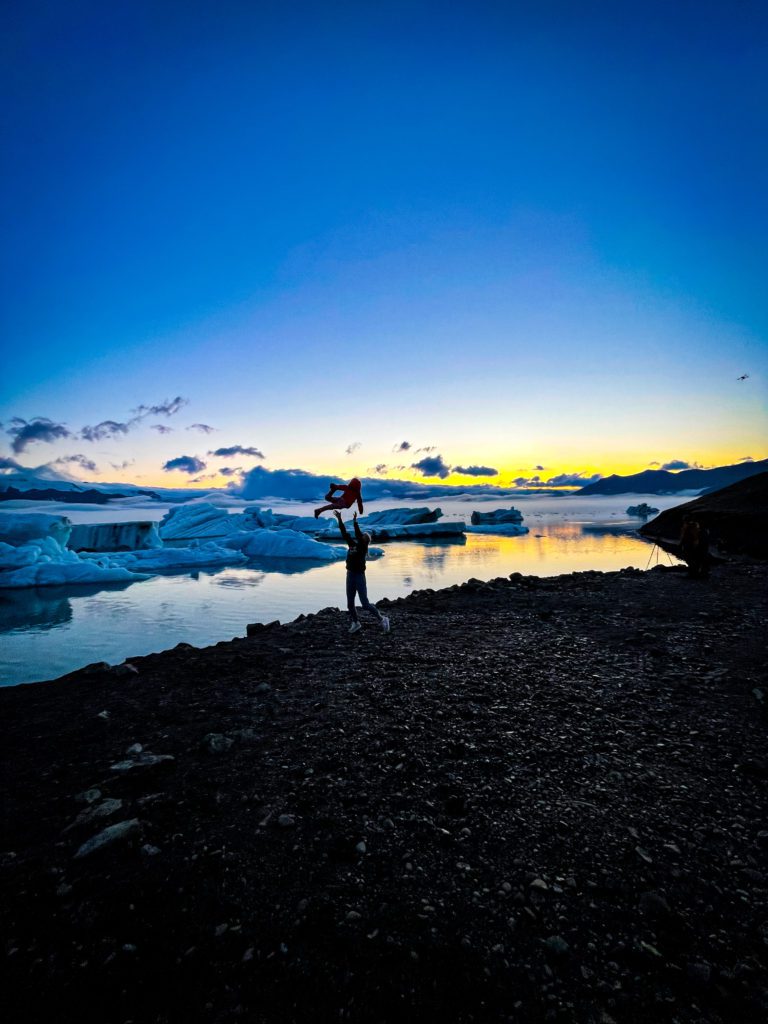
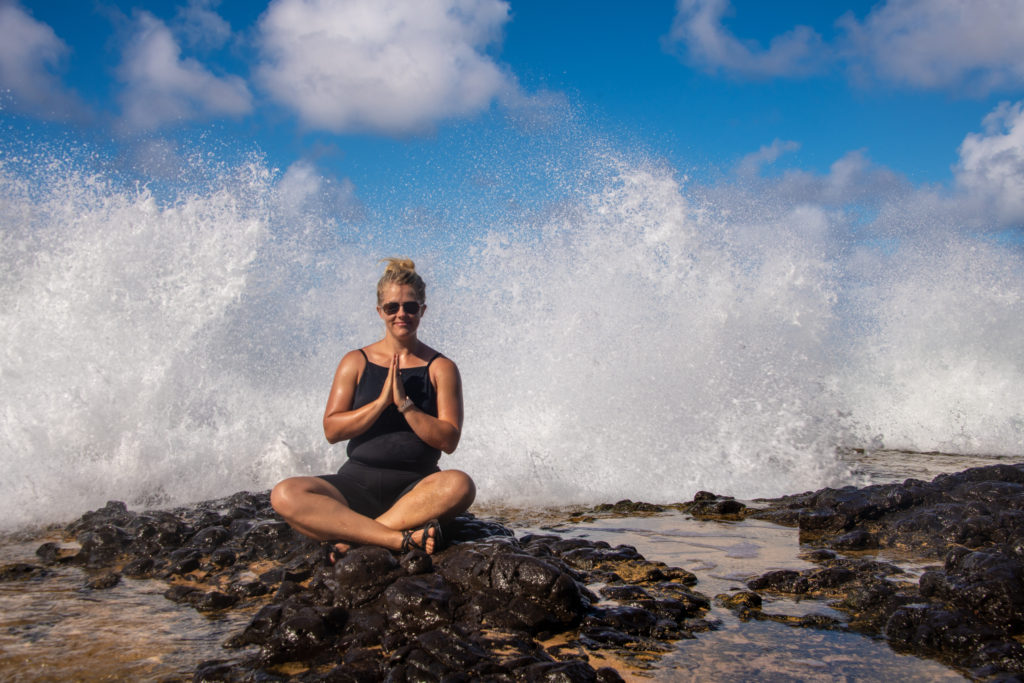
*Disclaimer: This post may contain affiliate links. Opinions shared are my own, and I only endorse products I support. By clicking on any of the links below, I may get a small commission if you purchase at absolutely no additional charge to you. I appreciate your support.*
Travel is challenging, and travel days are the worst part. The more you can relax, the better things will go. You should expect some hiccups and certainly don’t plan for everything to go smoothly. You’re ahead of the game if you are mentally prepared for a few mishaps, and they never happen.
Keep in mind everything can be fixed eventually. Even if you miss your fight, don’t have time for food, have cranky kids, your baby cries the entire flight, or can’t get a taxi… it will all work out. Default to tip number one and stay calm. Use the resources and people around you to reroute and get back on track. Rest assured, many people have been in the same situation and lived to tell their tale.
Travel days are the price we pay for travel. Once you’ve had a few days of making fantastic memories, the stress of the travel day won’t be anything but a story to tell.
One of the first things people consider when traveling internationally is what to pack! Here are a few quick tips to consider.



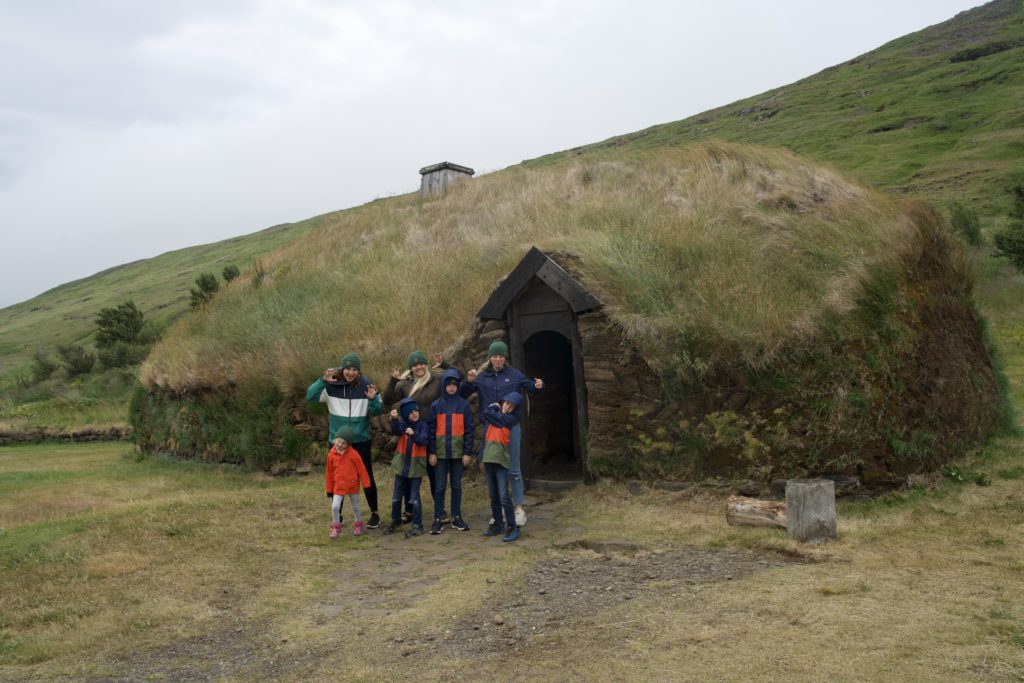

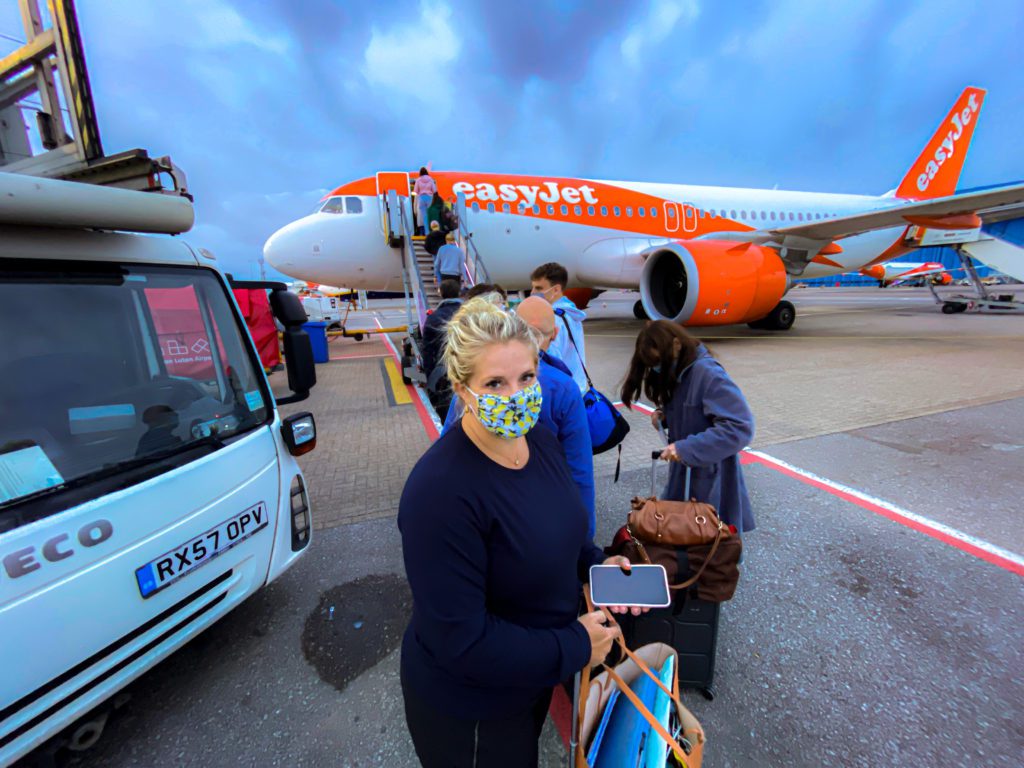
It’s very difficult to travel abroad without boarding a flight to get there. You’ll want to prepare for some serious flight time when traveling to a foreign country. Depending on your destination, you could be in the air for 10-12 hours. Our longest flight was to and from New Zealand, which was about 12 hours.
This means hours of sitting, lots of time to kill, and several bathroom breaks; which only increase when traveling with kids. You can find my best tips for flying with a baby here.
Get Moving. Especially if you are pregnant or have circulatory issues, it’s important that you get up and walk about once an hour during these long flights. Although many domestic flights are difficult to walk around in, international flights offer bigger planes with wider aisles, making it much easier. Taking a walking/standing break every hour or so is a good idea to keep your circulation moving and your mind a change of scenery.
Bringing Your Own Snacks. You’ll want to pack some healthy snacks in your carry-on. While most international flights offer one meal, it’s often not very large, and with Covid, allergies and preferences are not considered. The last thing you want is to be hungry with hours to go or have grumpy hangry kids with no snacks to offer.
Candy and junk food will make you feel yucky, especially with limited movement, so think crackers, veggies, oranges, etc.

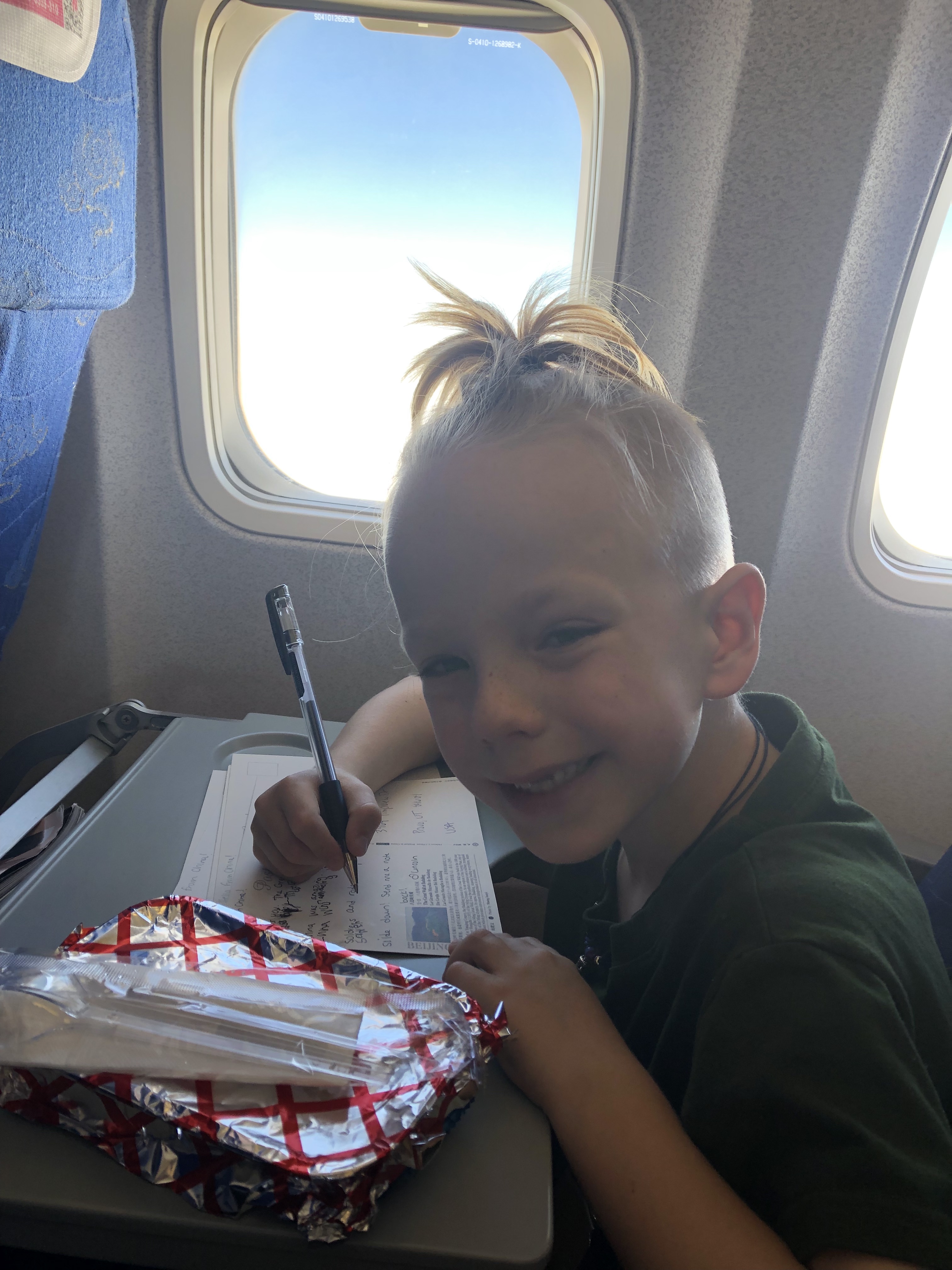
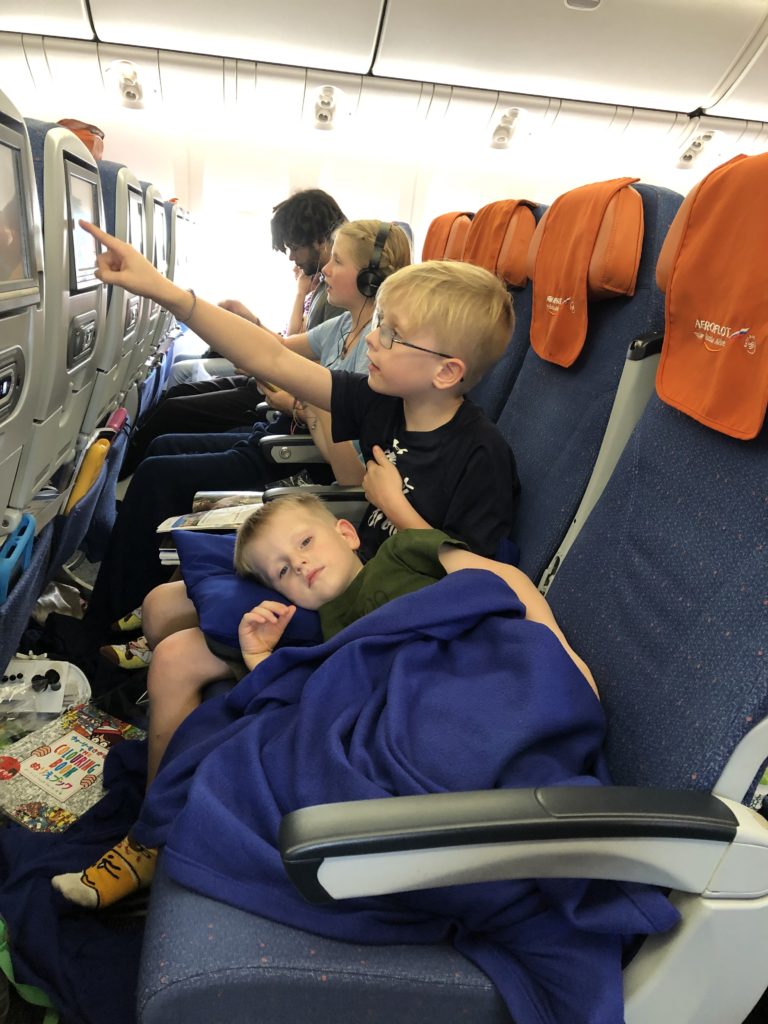
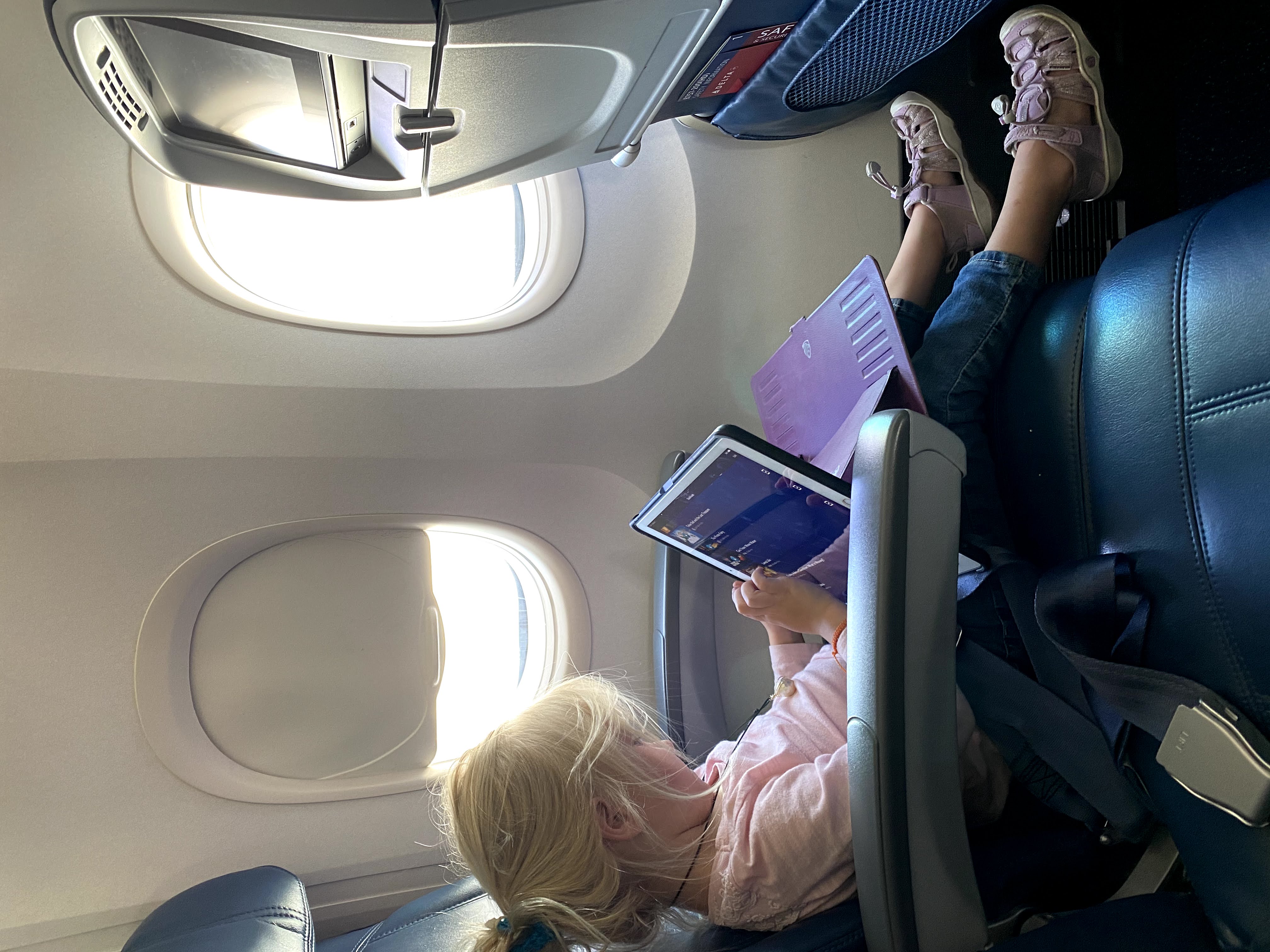
Entertainment: Whether you are traveling as an adult or with kids, you’ll want some form of entertainment for long flights. Some of our favorites with kids are:
None of these items are necessary, and I would not recommend buying all of them. Finding the perfect travel accessories takes a bit of trial and error. Eventually, you’ll find one or two that make all the difference for you.
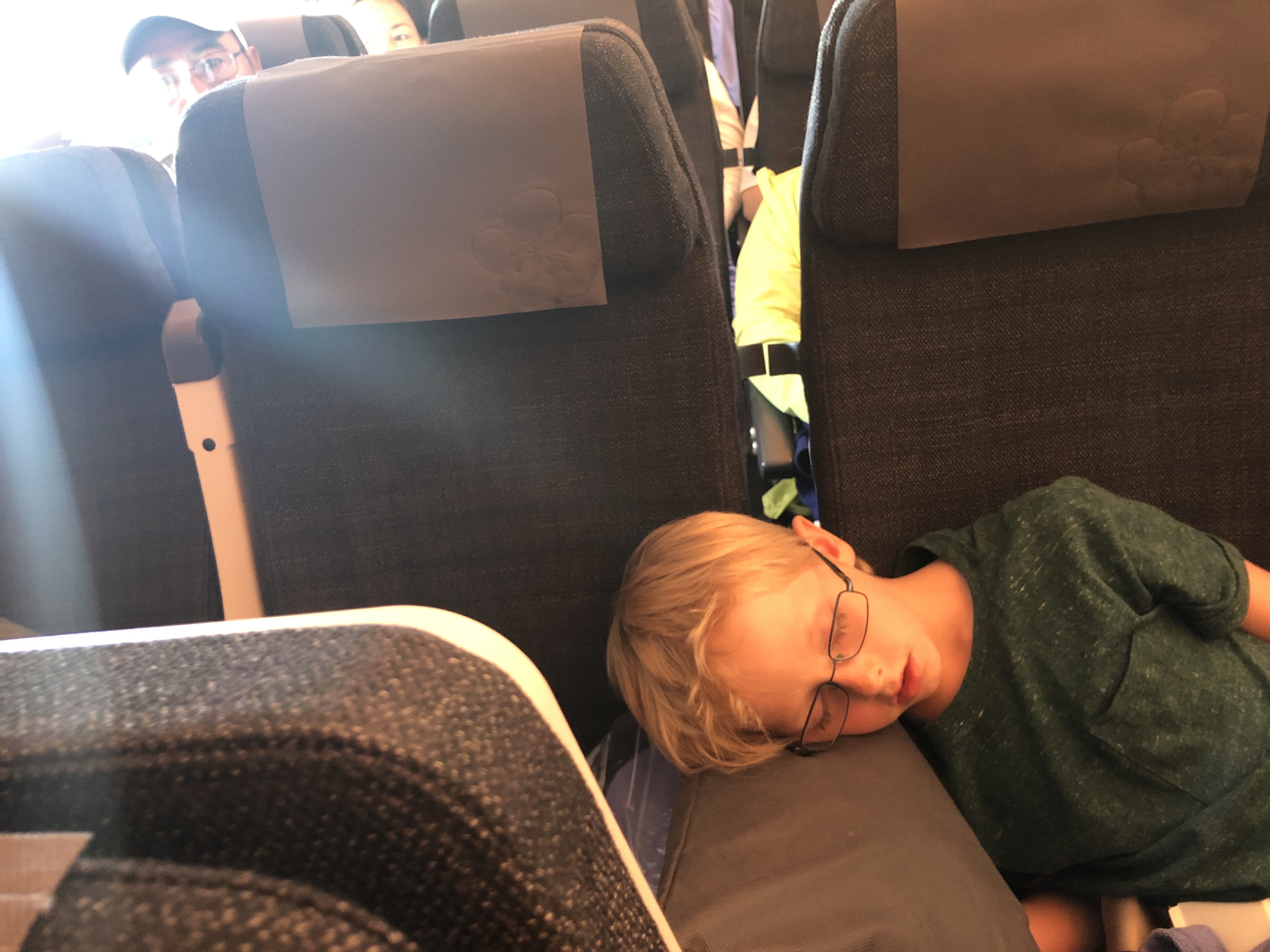

Typically on a long, international flight (5+ hours), the airline will provide a blanket and pillow for you to use. However, this experience varies greatly and is unpredictable since Covid. This year, we’ve been on flights where we’ve had to ask for the items specifically, others where they were automatically on our seats, and some that did not have any pillows or blankets as they had run out before the back of the plane.
When taking an overnight flight with kids, I will bring items to help them to sleep better. I love this inflatable footrest pillow that turns the seat into a little bed.
I also love my travel pillow like this one. It’s the first (after many tries) that allows me to sleep sitting up.
Some other comfort items we love include:
In some countries, specifically throughout Europe and Brazil, we’ve found it’s common for your gate to be unassigned until it’s time to board your flight. This differs from the USA, where you often know your gate before arriving at the airport. In these scenarios, you’ll need to pay closer attention to airport signs and the clock.
When booking your flights, you’ll want to pay attention to the flight times and special attention to layover times.
Any time you change countries (outside of the EU), you’ll need to go through customs. This can take anywhere from 20 minutes to several hours, depending on staffing, line lengths, strikes by the employees, and other factors.
Because of this unpredictability, our minimum layover time on an international arrival is 1.5 hours. This is tight! Three hours is much safer and more comfortable. With the extra time, you can be confident you’ll get through customs and have time to secure a meal before your next flight.
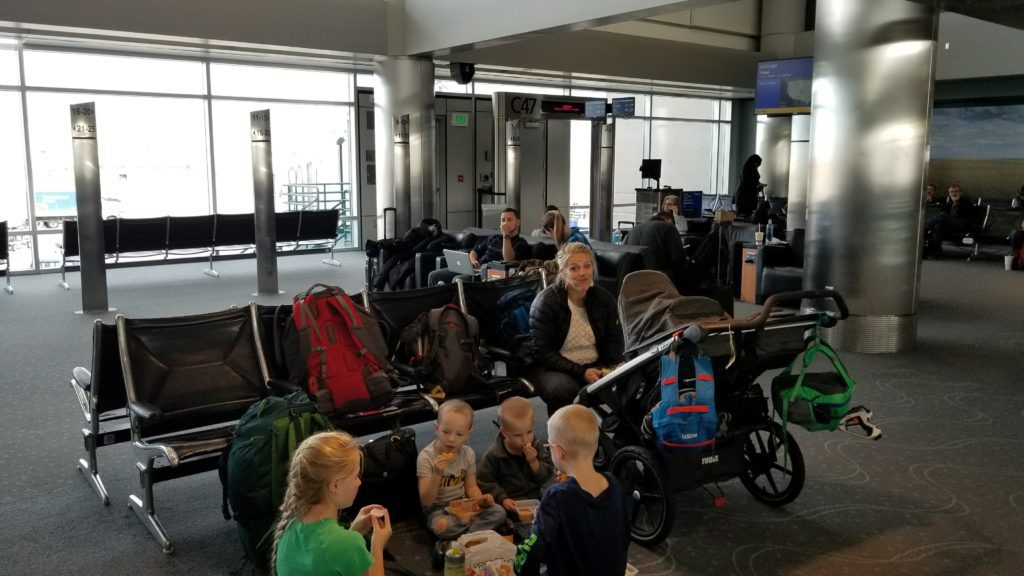

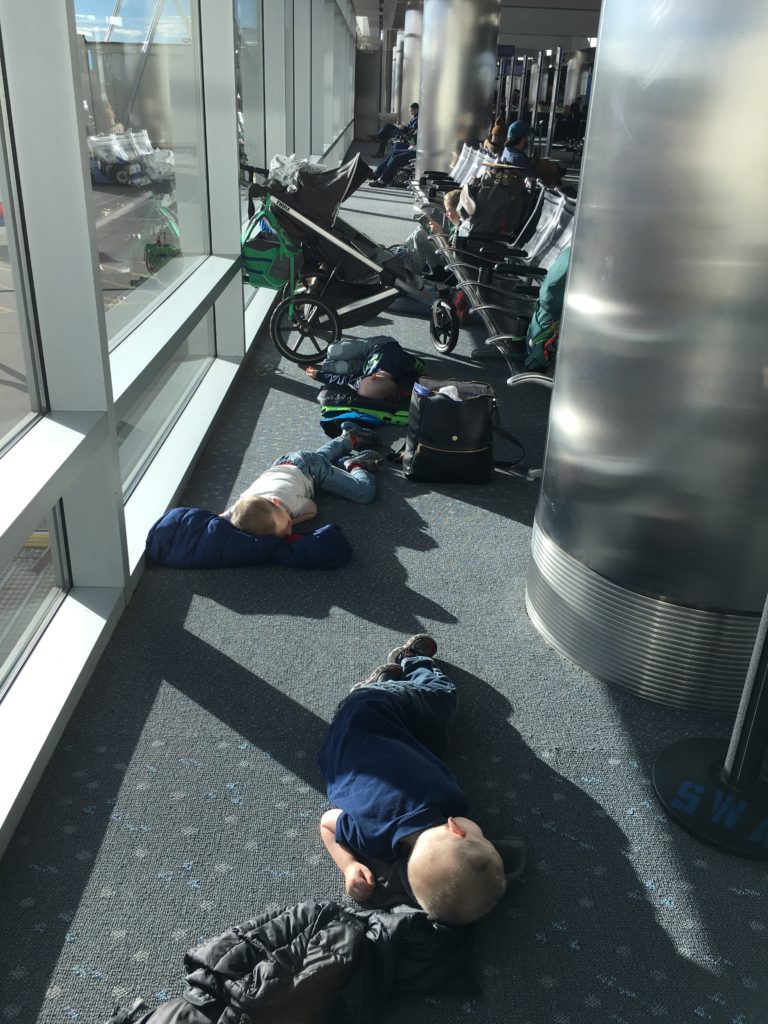
Our longest layovers have been 7-10 hours during the day, and a few have been overnight. If you have a layover of more than 6 hours, check to see if there is a hotel in the airport you can book. If you have an overnight layover, try to book an airport hotel; preferably one you can walk to or take a quick shuttle.
Nothing is more refreshing than sleeping on a real bed and getting a hot shower after a long day of travel. A quick hotel stay and break from the airport can really help reenergize and boost morale!
We’ve also slept in our fair share of airports. For this, I strongly recommend bringing your own blanket or coat to lay on the floor. Choose a quiet area, stick in some earplugs, and cuddle with the little kids so you can feel if they wake before you. For very small children, have them sleep in their car seat near you.
As always, I recommend you bring the family traveler’s secret weapon: Melatonin! This natural sleep aid will help safely ease you to sleep without any lasting effects.
Before your arrival, you will be given some customs forms to fill out. When arriving in a new country, customs are required for entry. Essentially, the role of customs is to control the flow of goods in and out of the country.
In general, these forms want you to declare the following:
The flight attendants hand out these forms early in the flight. I try to make it a rule of thumb to fill them out right when I get them. I’ve often forgotten and am scrambling to fill them out in line, which adds more stress.
All flights arriving from another country are shuttled through a separate airport passage once you deplane. This passage will lead you to the customs area.
Pay attention to signs (often employees direct people if you have questions), and make sure you go to the “foreign passport” line.
Sometimes, if you are a US Passport holder, you’ll have a line grouped with other countries. For example, when we flew from Lisbon to London, we went into a line that included EU Passports, Japan, Canada, and a couple of others.
At the desk (or machine), you’ll show your passport and declaration form. Someone will look at your documents and stamp your passport before you exit.
Since Covid, every country now has its own forms that you’ll complete before you fly. Bring these through customs as well, as sometimes they are rechecked.
After your passport is inspected and you are cleared through customs, you can collect your luggage.
If you have declared any items, such as money over $10,000, certain fruits or vegetables, meats, livestock, etc., you’ll be required to pass through one additional inspection.
*Generally, do not bring fresh fruits, vegetables, or meats into a new country.



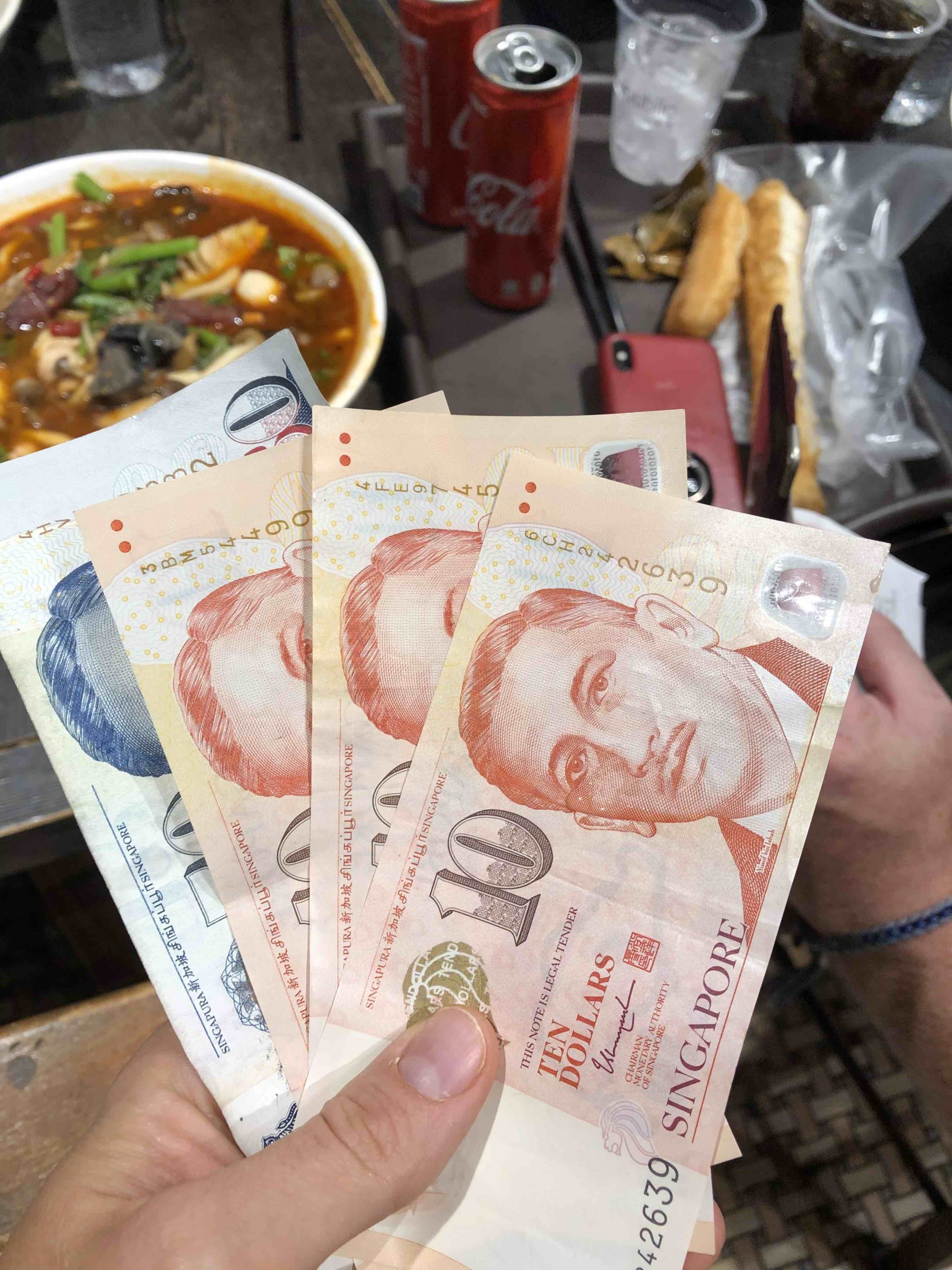

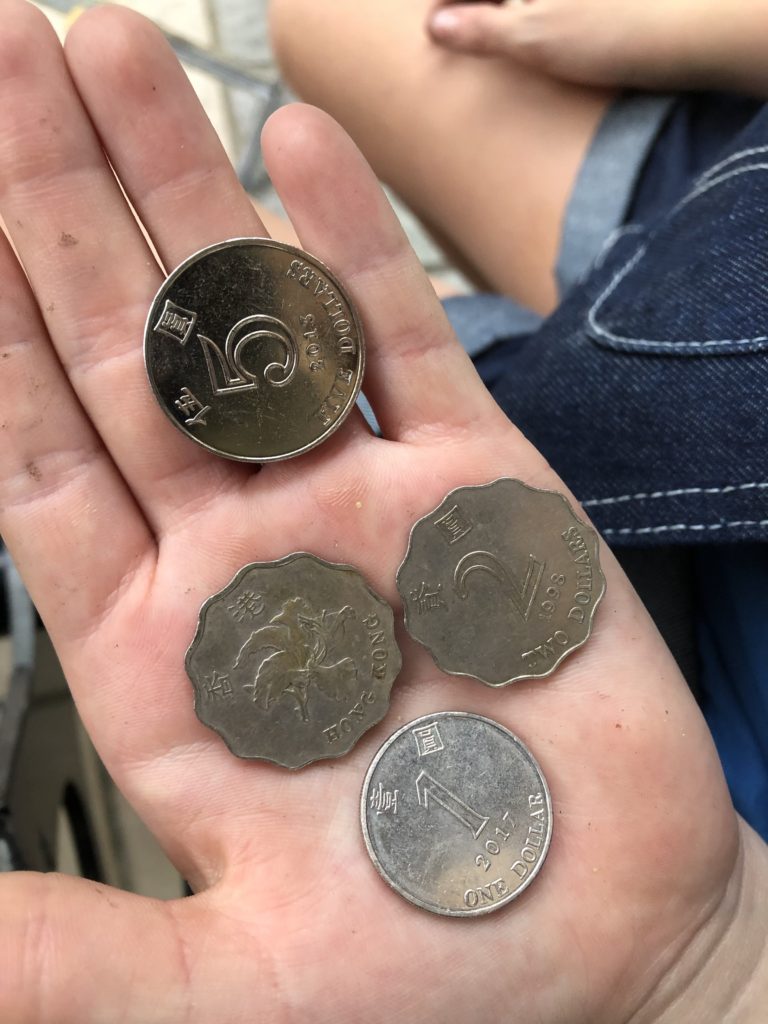
One of our favorite ways to experience a new culture is through food. Don’t be afraid to venture outside your comfort zone and try the local cuisine you usually avoid.
I forced my family to try escargot as a dare on our first trip to Paris; it is now one of our favorites! (Note, if you like mushrooms, you’ll love escargot).



When navigating food in a foreign country, here are some things to keep in mind:
How you get around a country will depend significantly on where you are. In Europe, you’ll likely walk or use public transportation. In Asia, buses, walking, or scooters are the most common. In others, you’ll want to rent a car. You’ll want to do some research ahead of time to find the best options for your destination.

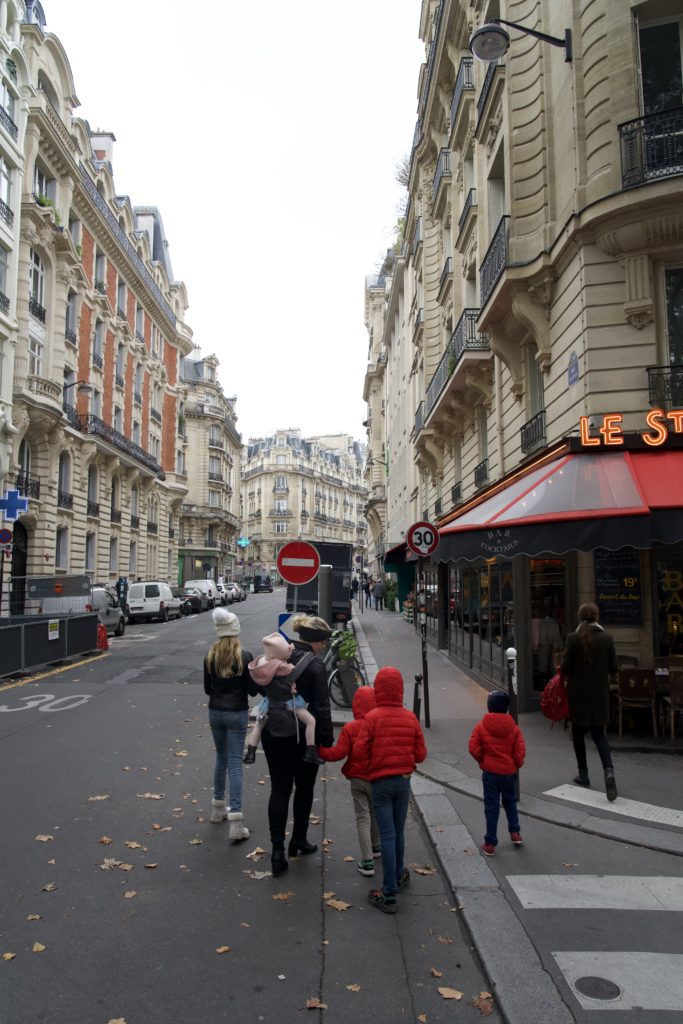

Renting a car can add lots of freedom to your trip. You’ll be able to explore much more and avoid the stresses of public transportation.
However, it can also add stress! In big cities, cars are much more of a hassle than they are a convenience. You’ll have to consider parking if you choose to rent a car, which can be tricky to find.
We didn’t rent any cars in Asia and skipped a car in Rome and Paris. However, exploring outside of the city is quite difficult.
A good compromise might be to rent a car for just part of your trip.
Rideshare apps (such as Lyft and Uber) are available in most countries. With large families like ours, this can be tricky as we typically have to reserve more than one car. However, it is usually a much quicker option than public transport and often cheaper than taxis. You also avoid the hassle of payment as it’s all done through the app.
You’ll need to research the appropriate rideshare apps for where you are going ahead of time. For example, Rome doesn’t use Uber and uses FreeNow instead, Asia uses Grab, etc.
Why we love rideshare apps abroad:
Downsides of ride-share apps in foreign countries:
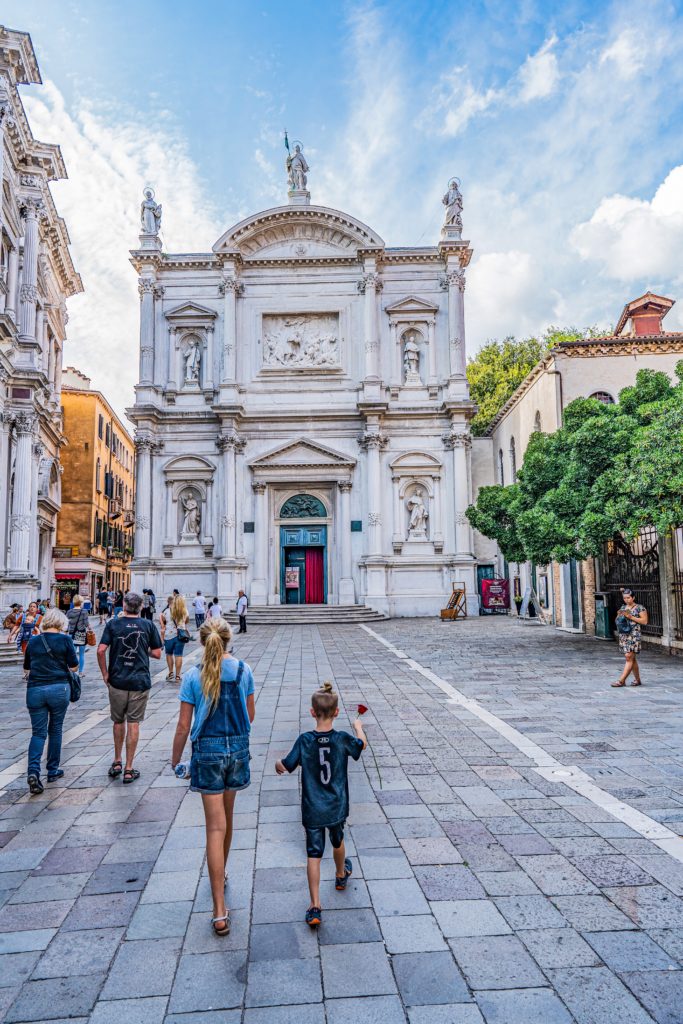


Overall, the anticipation of international travel is often much scarier than the realities. Our advice: stay calm, go with the flow, and enjoy as much of the country as possible. Do what you love! If you love to lounge by the pool, do it. If you want to visit every museum in the city, get moving!
International travel is exciting and is meant to be enjoyed. Take in the culture and trust us; you’ve got this!!
Good luck with your travels! Like all things in life, the easier it gets the more you do it.
Xoxo,
Leslie
Book your first international flight with Booking.com, Skyscanner, Kiwi.com, or Expedia
Check out top-rated hotels from Booking.com, Expedia, or Vrbo, (we also love Tripadvisor and Hotels.com)
Learn more about the world through guided tours from GetYourGuide, Airbnb Experiences, or Viator
Need to rent a car? Visit Rentalcars.com.
Get insured while traveling with World Nomads
Capture your best travel memories abroad as we do with a GoPro, Sony camera, or our favorite drones: DJI FPV, Air, and Mini
Check out your travel necessities from a comprehensive list of all the 7Wayfinders Travel Must-Haves. Click Here!




A Review of Christmas at Gaylord Of The Rockies: The Perfect Colorado Family Holiday Vacation
Best Apps For International Family Travel
Obtaining Two Passports: When You Need Them and How to Get Them
